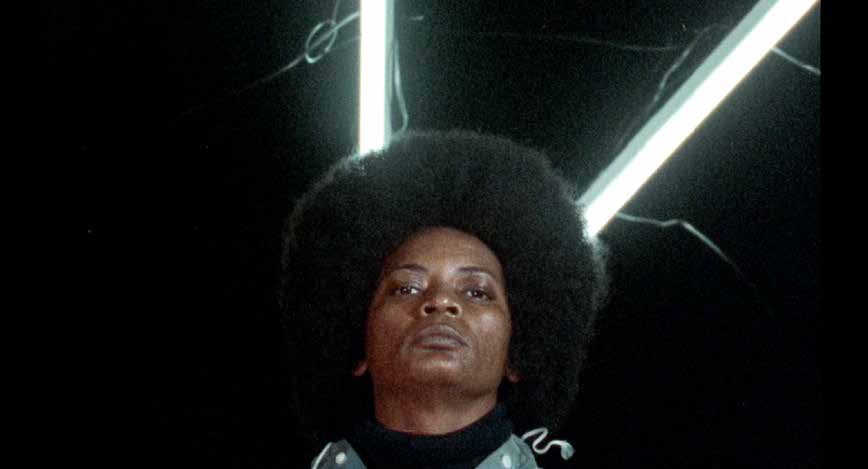Francia 2016
16 mm su DCP, colore, 12 min.
v.o. creolo della Réunion sott. in italiano
Scritto e diretto da/Written and directed by
Camilo Restrepo
Fotografia/Cinematography
Guillaume Mazloum, Camilo Restrepo
Montaggio/Editing
Bénédicte Cazauran, Camilo Restrepo
Suono/Sound
Mathieu Farnarier
Musica/Music
Christine Salem, David Abrousse, Harry Perigone
Cast
Christine Salem, David Abrousse, Harry Perigone
Produttori/Producers
Anne Luthaud, Joanna Sitkowska
Produzione/Production
G.R.E.C.
Distribuzione/Distribution
Collectif Jeune Cinéma (Europa)
Video Data Bank (USA)
Contatti
www.camilo-restrepo-films.net
www.cjcinema.org
www.grec-info.com
Per rispettare le ultime volontà della madre, ormai in fin di vita, una donna va alla ricerca di suo padre, che non ha mai conosciuto di persona: un donnaiolo, soprannominato “La Bouche”. Nel corso del proprio viaggio scopre però che l’uomo è già scomparso prima che lei riesca a vederlo per la prima volta. La musica diviene così l’unico medium utile a comunicare tra il mondo dei vivi e quello dei morti. Primo capitolo di un dittico musicale di finzione ad ambientazione africana, Cilaos combina i ritmi “Maloya” delle isole Réunion (con l’interpretazione della musicista réunionnaise Christine Salem) al lavoro sulla trama filmica già sperimentato nei film precedenti. Il risultato è un’opera sublime e travolgente, che proietta Camilo Restrepo nel novero degli artisti più visionari della sua generazione.
To observe the last wishes of her dying mother, a woman goes in search of her own father, whom she had never met, a womanizer, named "La Bouche". During het journey, however, she discovers that the man disappeared before she could even saw him for the first time. Music thus becomes the only useful way to create a bridge of communication between the world of the living and that of the dead. First chapter of an African-set musical fiction diptych, Cilaos combines the "Maloya" rhythms of the Réunion islands (with the performance of the réunionnaise musician Christine Salem) and the work on the filmic texture already experimented in the previous films. The result is a sublime and overwhelming piece of art, which reveals Camilo Restrepo as one of the most visionary filmmakers of his generation.


